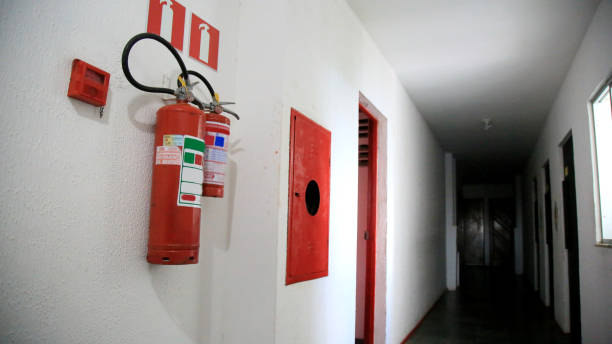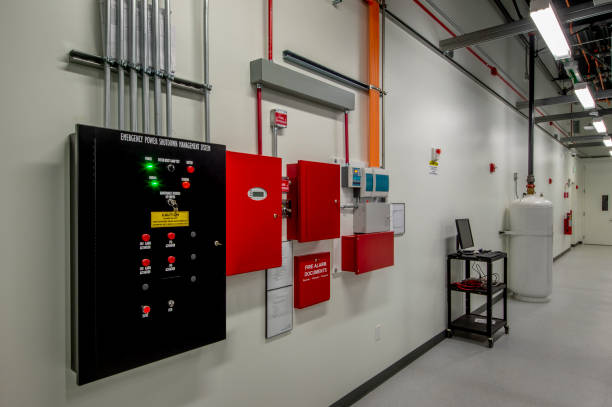A fire strategy sets a clear framework for fire safety – helping to protect reputational risk, increase productivity and ensure protection of Life, Environment and Assets. It is invaluable for due diligence purposes and if a strategic approach to managing fire risk is needed in a wider business context. It demonstrates compliance with the fundamental objectives of the applicable fire safety legislation, business, and property protection objectives, and provides the basis for a safety case that to meet the requirements of insurers.



A fire strategy sets a clear framework for fire safety – helping to protect reputational risk, increase productivity and ensure protection of Life, Environment and Assets. It is invaluable for due diligence purposes and if a strategic approach to managing fire risk is needed in a wider business context. It demonstrates compliance with the fundamental objectives of the applicable fire safety legislation, business, and property protection objectives, and provides the basis for a safety case that to meet the requirements of insurers.
The Fire Protection Association (FPA) defines a fire strategy as: “A fire strategy is a complex document specifically tailored to a building, reviewing all aspects of the building’s fire safety features including construction, compartmentation strategy, means of escape and other fire safety features/measures – including management arrangements in place to ensure it is fit for use for the end user of the premises or intended purpose group.” A fire strategy is the way in which fire safety objectives for a new, altered, or existing building are defined and achieved.
GOALS & OBJECTIVES OF FIRE STRATEGY
The objectives of a fire safety are to protect life and property, prevent fires, limit damage, maintain continuity of operations, and ensure the safety of workers and others involved. The fire strategy plan must provide a comprehensive overview of what passive systems and active measures will be implemented if a fire breaks out to save lives and reduce property damage. The goals are listed below:
– Protect lives.
The main purpose of a fire safety is to protect human life. This includes safely evacuating buildings in the event of a fire, as well as preventing fires and quickly detecting and extinguishing flames to minimize the risk of injury and death.
– Protect property.
A Fire safety also aims to protect properties, both tangible and intangible. This includes buildings, equipment, materials, documents, data, and information, among others.
– Prevent fires.
Fire prevention is an important part of fire safety. This includes measures to reduce the risk of fire, such as installing fire detection and alarm systems, fire suppression systems, safe electrical and mechanical systems, and adopting safe workplace practices.
– Limit damage
In the event of a fire, the goal of fire safety is to limit the damage caused by fire. This includes containing the fire to a specific location, limiting damage to equipment and materials, and reducing the time required to recover operations.
– Maintain continuity of operations
A Fire safety also aims to maintain continuity of operations during and after a fire. This includes ensuring that businesses can continue to operate normally after a fire, minimizing the impact on operations and the personnel involved.
FIRE STRATEGY PLANNING AND IMPLEMANTATION ORGANIZATION:
A fire strategy is composed of – fire risk assessment, fire safety design engineering, and systems engineers for mechanical, piping, and electrical systems in the team. A fire risk assessment / fire engineering approach will be adopted in developing a fire strategy document recognizing the inter-relationship between all areas and parties. The findings are documented in a report. This document provides a high-level overview of the fire safety aspects of the fire engineering design that was incorporated into the building in its original (and any subsequent construction phases) conception and the management of fire safety plans/procedures implemented in conjunction with the daily operation of the facility.
FIRE STRATEGY:
A fire strategy would typically focus on the following issues:
– Evacuation routes (Means of Egress)
– Internal fire spread (fire rating of walls, doors, floors and structure)
– External fire spread (external fire spread issues)
– Facilities for firefighting (Access for fire response service / Active fire protection systems / Fire safety management for the building) Fire strategy recommendations.
1. FIRE AND EMERGENCY WARNING – Provision of alarm and notification center for fire emergency first responder. Other emergency and early warning systems and integration interfaces with the fire alarm system are included.
2. MEANS OF EGRESS – Analysis of travel distances, existing escape routes to fire assemble points and loading capacity of occupants or users. Provision of emergency lighting, fire emergency signages, and fire emergency plan layouts for various locations within a facility.
3. INTERNAL FIRE SPREAD (INTERNAL PASSIVE FIRE PROTECTION) – The levels of internal fire protection for evacuation routes – escape routes, fire and smoke doors, door fire and smoke assemblies, fire and smoke curtains, fire and smoke dampers, fire retardant surface linings, fire barriers sealants for penetrations and joints) required for fire separations, maximum vertical and horizontal compartmentation sizes, safe evacuation, fire sprays, and meeting regulatory requirements.
4. EXTERNAL FIRE SPREAD (EXTERNAL PASSIVE FIRE PROTECTION) – Analysis of possible thermal properties of a structure in the case of a fire incident and fire spread via openings, roofs, facades, and through heat transfer from adjacent structures such as fire rated walls and floors considering thermal cracking of concrete for provision of concrete covers based on concrete grades, thermal expansion of metals for provision of expansion gaps, thermal loads and effects on structures.
5. ACCESS FOR FIRE RESPONSE SERVICE – Analysis of whether fire protection solutions meet the minimum benchmarks of building construction codes and regulatory requirements, such – vehicle access by fire emergency responders, rising mains of standpipe systems, firefighting lifts, access points like fire department connections are considered.
6. ACTIVE FIRE PROTECTION SYSTEMS – Analysis of design, installation and maintenance requirements based on NFPA, or BS standards are carried out for – gaseous fire extinguishing systems, fire and gas leak detection, sprinkler and spray systems, fire alarm and detection systems etcetera.
7. FIRE SAFETY MANAGEMENT FOR THE BUILDING – Management strategy for fire evacuation, fire safety training, fire drills and staffing for firefighting as may be incorporated in policies, procedures, fire risk assessments, planned preventive maintenance schedules, hot work permits, vendor management, and fire safety systems maintenance and testing.
8. FIRE STRATEGY RECOMMENDATIONS – Recommendations of a fire strategy is based on facility type or use, hazard class, other specific considerations are made in compliance to applicable regulations and standards, which is adopted in the design, construction, and maintenance of an asset through its lifecycle.
The report sets down the fire safety objectives and how these objectives for Life Safety and Property Protection are delivered at the property. The contents are summarized below:
– Executive Summary
– Principal Fire Safety Features
– Report Limitations
– Development Description
– Goals, Objectives, and Performance Requirements
– Building Population
– Means of Warning and Escape
– Emergency Lighting and signage
– Internal Fire Spread
– Structural Fire Protection
– External Fire Spread
– Fire Service Access and Facilities
– Management Strategy
– Conclusion
– Appendices
CONCLUSION:
This critical aspect of business and financial risks management is extremely important as a baseline requirement for ensuring Safety of Life, Environment and Asset. A fire safety audit and fire risk assessment, fire safety engineering, and fire safety management – plans, policies, and procedures are put in place in line with standards, and regulations by the fire risk assessors and fire safety engineers for use by fire emergency responders to reduce fire risks to As-Low-As-Reasonably-Possible (ALARP), and to improve protection of life, assets, environment, and ensure non-interruption of operations by users.
SAFETY CONSULTANTS & SOLUTION PROVIDERS (SCSP) are leaders in the protection of life, assets, environment, and business continuity in Sub-Saharan Africa. Engineering, procurement, construction, installation, commissioning, and maintenance of Fire Safety, Occupational Safety, Environmental Safety, Security, Building Management Systems, Technical Safety and Process Safety services.









